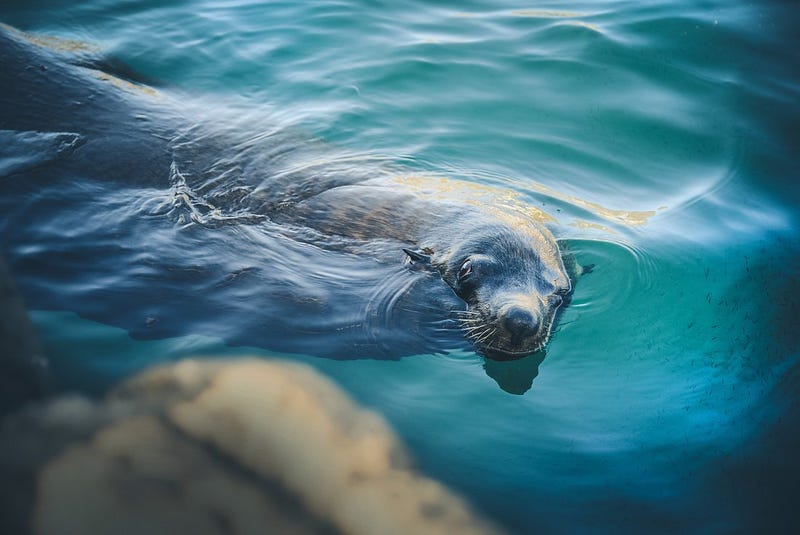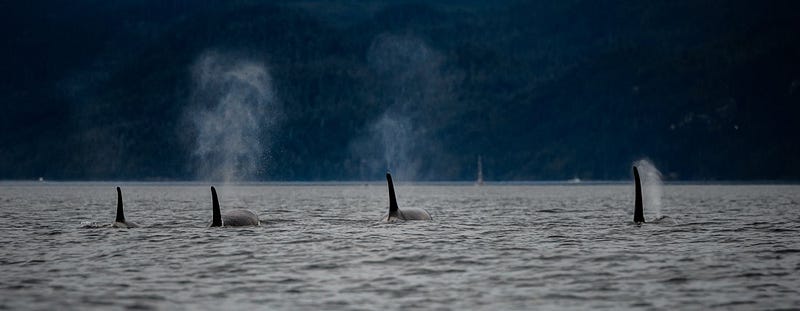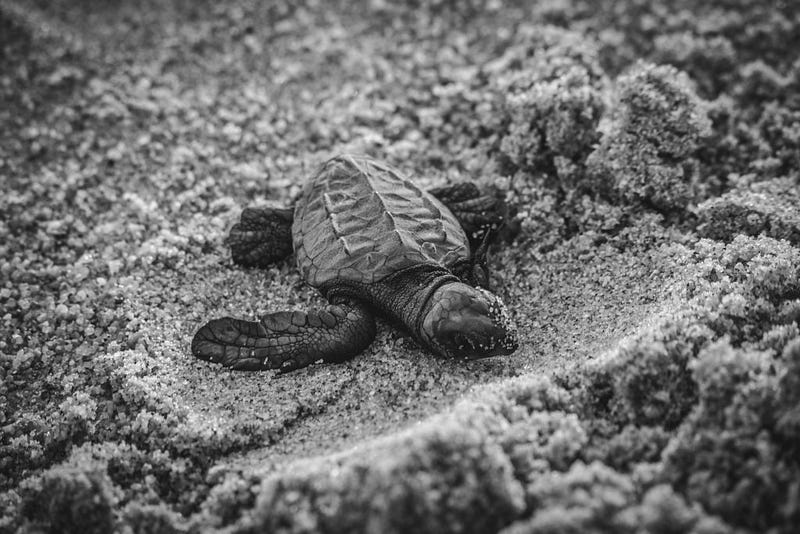
Starving marine life, and everything you need to know about sustainable seafood — if there is such a thing anymore…
There are devastating impacts from overfishing and farmed fish upon wildlife and our marine ecosystems. As we look at these issues, keep in mind that overfishing and factory fish farms (aquaculture) make all the other problems even more stressful and devastating. Sadly, the beautiful ocean of this Earth has become an extremely stressful home for marine life.
While humans may not live in the ocean, our lives depend upon the ocean as well. If the ocean life cannot survive, we won’t be able to either. Seeing all life on the planet as connected and interdependent, as family, is the most accurate viewpoint, when it comes to seeking a healthy future for everyone.

The April 2019 report from Changing Markets on Aquaculture addresses many of the critical issues we now face. Their graphic above contains the following information:
- the ocean is sick and severely depleted
- overfishing, along with climate change, demand, and pollution (sound, plastic, chemicals, fabrics, waste) are destroying the ocean’s ecosystems
- billions of wild fish and crustaceans are used to feed farmed seafood
- aquaculture is the fastest growing food production sector
- overfishing takes food and livelihood away from the poor who are in countries without food security
- the wild fish taken to create fish meal and fish oil (“forage fish”) are key to the food chain, including: plankton, fish, marine animals, and seabirds
- the main forage fish within the food chain are: anchovy, sardine, herring, mackerel, and krill
Some carnivore species rely on just one species of food in order to survive, like the orca pod that is starving, in the NW Pacific, who depend on endangered Chinook salmon. It may seem strange, but it is really no different than the monarch caterpillar whose sole food source is milkweed (which is scarce due to heavy use of pesticides in the Midwest). Another example, breeding penguins rely on anchovies off the coast of South Africa. When the anchovies are not there, then babies cannot be born or are weak and may not survive. In South Africa, a ban was placed on catching “forage fish” like sardines and anchovies to help the endangered penguins. Evidence shows that bans like this help the penguins. Forage fish numbers can mean life or death for marine life.
The good news is: we can take steps to speak out against policies and practices that contribute to this kind of overwhelming devastation, and resulting starvation for marine life. It isn’t too late to take a stand with voice, choice, and actions. It is best to start at home, with our own lifestyle — and that goes hand in hand with political action. We can change our demand for food, while we support political and business leadership that upholds what is most ethical and sustainable.
Heartbreaking Impacts: Starving Marine Life
In just the past year or so, if you search the internet for news about overfishing and the impacts of aquaculture, you will find report after report about all kinds of wildlife that are starving to death, with little to no help on the way — like seabirds of all kinds, whales, orcas, dolphins, and sea lions.
These reports are not easy to read, yet it is important that we read them. If we turn away from the difficult news, just because we feel small and helpless about it, or too tender, we will not have the awareness that is necessary in order to make informed decisions. When we are aware of the problems we face, then we are able to respond to them more appropriately and effectively. And, certainly, people are becoming aware, and things are being done — but there is not enough momentum yet, and too much suffering is continuing.
Just this week, I wrote about the ethical issues involved with the Native American Lummi tribe’s call to feed the starving orcas in the bay of Seattle and Bellingham Washington. I do support their call to feed the orcas now. The fact is, aquaculture (factory fish farms) monopolize much of the food that would be in the ocean for our fellow living beings, like the orcas. We need to re-direct what is happening. There is a need to respond to starvation (whether they are human or birds, mammals or other sorts of living beings) by providing food.
Still, we are dealing with difficult problems. Feeding those who are starving leads to heart-breaking questions about a means for survival after the starvation is alleviated — because of other ongoing problems like pollution and ocean warming.
The stark truth is that the starvation tragedies occurring worldwide are due to: loss of habitat, pollution (like plastics and chemicals), loss of food sources due to overfishing and farmed fisheries, ocean warming, and climate change. It would be foolish to think that none of this will affect us humans. What happens to wildlife and nature is surely happening to us as well. However, we can still act to change some parts of this. But first, let’s learn more about the issues of aquaculture and sustainable seafood.
The Problems Of Aquaculture
Farming fish is meant to take the stress off of the oceans, provide a way to supply more sustainable seafood, and give us healthier alternatives to other meats. Instead, farmed fish and aquaculture has not decreased the demand for wild seafood, nor has it decreased the stress on ocean wildlife and fishes.
Why is this? Fish farms need to feed their fish, and that requires huge amounts of wild fish to be taken from the ocean, slaughtered, and turned into feed. In addition, almost all fish farms are filled with wild fish at the start. On top of that, the way in which fish farms are managed is for profit and expansion, not conservation and healthy sustainability.
Beyond these problems with fish farming, aquaculture also contains the same dark side that all factory farms have, they are: huge, crowded, have dirty containment with runoff; tons of antibiotics and chemicals, genetic modification, and inhumane cruelty.
As is too often the case in the United States, Native American beliefs and practices are not respected or protected enough in these matters either. Salmon are sacred to Native Americans. Therefore, Native Americans wish to protect the wild salmon that are now endangered.
Another problem: fish that escape from the industrial fish farms cause chaos and damage the local ecosystem by way of pollution, non-native diseases, and competition. The factory farmed fish that are crowded in nets in the ocean, also cause great peril for marine life. The huge and unethical crowding of the “frankenfish” draws attention from hungry ocean life, who then get entangled in the nets.
In addition, overfishing also takes away the livelihood and food from poorer populations around the world, who are dealing with the effects of climate change, and loss of food sources and clean water.
All of this translates into a massive humanitarian and environmental crisis and disaster. Suffering among the most vulnerable will continue and increase, until major efforts are made to end the corruption, exploitation, and abuses that are going on in our country and world.

A solution that is proposed for the impacts of aquaculture overfishing to feed the fish in their farms, is to depend more on freshwater and plant-based food for the farmed fish.
Unfortunately, plant-based food for farmed fish and other farmed seafood is another empty solution. Fish farms that apply this method, most often depend on massive crops, which demand huge amounts of resources. According to Anthropocene magazine, “demand for freshwater went up by 63%, both land-use, and phosphorus use (for fertilizer) surged by over 80%.”
This translates into increased pollution and stress on freshwater and land resources and ecosystems, due to corporate farming practices. All in all, aquaculture, as it stands now, is not sustainable. Just as factory and corporate farming are not healthy, sustainable, or humane.
Whenever profit and quantity are prioritized over life and collective and environmental health, we will find disastrous results for life and future.
~ C.S. Sherin, author of “Recipe For A Green Life”
Many of the major producers of fish meal and fish feed for factory fish farms commit to transparency and sustainability in word only. There are no real disclosures or transparency about the amount of wild-caught fish that are taken, sourcing, or sustainability measures — if any.
Despite all of these serious problems, aquaculture (including fish, shrimp and mollusks) are booming. Yet, most of these harbor all of these dark and dangerous issues, which are threatening the survival of life on our planet.
Sustainable Seafood Problems
If we are going to eat seafood, we need to make sure that we are choosing seafood that is healthy and sustainable. With all the marine life dying and starving around the world, we have to really sit with the question: is seafood really ever sustainable anymore?
Let’s start with the big official certification for sustainability. Does the seafood have a certification in sustainability from the Marine Stewardship Council (MSC)? Then it must be sustainable and good, right? Certainly, it is an important marker. Yet, much like loopholes and other transparency issues that exist with organic certification, this seafood sustainability certification also has problems and challenges regarding transparency and accuracy of claims. The Pew Environment Group thinks it is misleading for the MSC certification to use the word “sustainable”.
Some critically endangered species, according to the National Marine Fisheries Service (NMFS) include: southern bluefin tuna, hawksbill and leatherback sea turtles. Some endangered species include: loggerhead, green, and olive ridley sea turtles, sawfishes, and blue whales. Whale sharks, humpback whales, grey nurse sharks and great white sharks are likely to go extinct if nothing changes. Close to being endangered: stellar sea lion, gaudalupe fur seals and California sea otters. Depleted species include: bottlenose dolphins, spinner dolphins, fur seals, spotted dolphins, and beluga whales. The Marine Bio site explains that the International Union for Conservation of Nature (IUCN) cannot give a complete picture of all species in peril. For example, barely any invertebrates are listed, because information on invertebrates is difficult to track. Source: Marinebio.org.

Is Our Seafood Sustainable Or Not? When thinking about seafood and where to get it, consider the following first:
- How is the fish or other sea life caught or farmed?
- Is the species being overfished? Is the fish farm dirty, irresponsible, and/or contaminated?
- Is the fish or other seafood’s food source (forage fish) being overfished?
- Is there an issue of bycatch? Young fish, hundreds of thousands of sea turtles, sea birds, and mammals like whales, dolphins, threatened sharks, and porpoises are victims of bycatch. There are 250,000 endangered sea turtles victim to bycatch yearly.
- Shrimp and tuna cause some of the biggest negative impacts of bycatch, and are in high demand in the US.
- Long-line vs. pole and line fishing (low bycatch methods)
- How much are fossil fuel driven practices a part of the supply of the seafood via ships, farm, and transport?
- Consider the source carefully. For instance, some aquaculture is a type of monoculture (like shrimp farms in Thailand) that cause serious pollution and mangrove decimation.
- While there is not a lot of research about the long-term impacts of pollution like radiation, crude oil, microfiber and micro-plastic pollution (and the persistent chemicals that are attached) — these are all issues worth keeping in mind.

More Sustainable Seafood Choices
And finally, here is a short list of guides to help you navigate finding sustainable seafood on a day-to-day basis.
- Seafood Watch (Monterey Bay Aquarium)
- Blue Ocean Institute, Safina Center
- Marine Conservation Society
- Local Catch
- Seafood and mercury levels (NRDC guide)
These are important issues to talk about, explore, and act on. I hope this has been a helpful and motivating guide for you. If you know of more helpful resources related to this, or good news related to any of it, please do share in the comments.
Aquaculture Sources:
- “Factory Fish Farming” Food & Water Watch
- “Industrial Ocean Fish Farming — Bad for the Ocean, Fish, and People” Friends of the Earth
- “Aquaculture: Pollution & Disease” Seafood Watch
- “Billions of tonnes of wild fish used in aquaculture” iNews UK
- “Fishing the Feed: Until the seas run dry” Changing Markets Foundation
- “Overfishing” Young People’s Trust For the Environment
Originally published at my old Recipe For A Green Life blog on April 30, 2019.